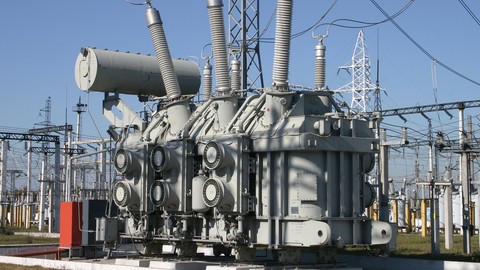
Power System Analysis – Part 2: Equipment Models
-
Generator circuit models and their analysis -
How generators are used in power system analysis -
The per-unit system and its use in analyzing power systems -
Electrical transformers circuit models and their analysis -
Transmission line circuit models including short, medium, and long lines
- Basic knowledge of AC circuits
- Prior knowledge of circuit analysis
This course is the second part of a multi-part course series about one of the main areas of electrical engineering: power system analysis. Power system analysis is the core of power engineering and its understanding is therefore essential for a career in this field. In this second course of the multi-part course series, you will learn about generators, electrical transformers, and transmission lines and their use in power system analysis. The course is divided into the following sections:
1. Generator Models: in section 2, we will introduce the synchronous generator, which is where all the power in power systems comes from. We’ll begin by defining the circuit model of the synchronous generator so that we can analyze its performance. We will then continue to discuss key concepts, such as voltage regulation and the power angle, and will end with several examples.
2. Transformer Models: in section 3, we will introduce the power transformer (also called electrical transformer). Transformers allow power systems to operate at different voltage levels and are an essential part of any power system. We will begin by defining the equivalent circuit model of a power transformer, and will then move on to discuss the approximate and simplified circuits. We will also solve several examples along the way.
3. The Per-Unit System: in section 4, we will introduce the per-unit system. The per-unit system is a technique used extensively in power system analysis and is therefore essential that it is understood. This technique allows for the analysis of a power system, which may have components operating at different voltage levels, into one continuous circuit. We will solve several examples to illustrate how the per-unit system can help with the analysis of power systems.
4. Transmission Line Models: in section 5, we will discuss the different transmission line models depending on their length, as well as why these models are good approximations of real-life characteristics.
In each section, several examples are solved to illustrate how to analyze real-world power systems.
By learning all the different circuit models of the components used in power systems, you will be able to continue your study of power system analysis for a career in power engineering and electrical engineering.
Remember that Udemy offers a 30-day money-back guarantee. I am also always available for questions while you go through the course to ensure everything is clear.
See you in the course!
- Anybody with an interest in learning about power systems and power engineering



